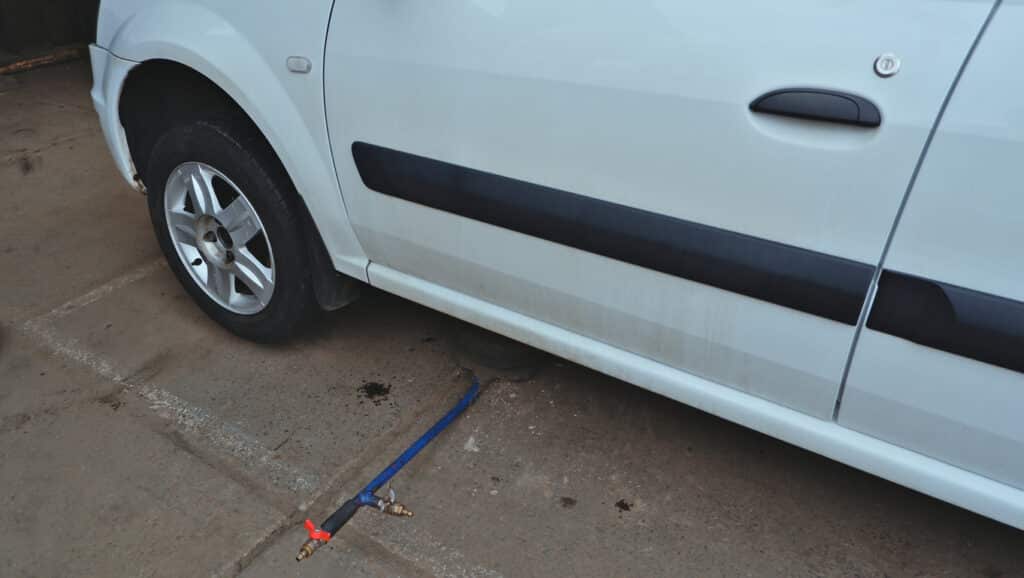How to Use Seam Sealing Tape for Cars
Just like the seams of a jacket or jumper, the seams of a car must remain secure and reinforced. But when they begin to degrade or wear away, this can allow water, dust and other materials to enter the vehicle, causing corrosion and rust to form. Tailgates, bonnets, flanges and door skins all contain a seam where the panels and substrates meet, and with seam sealing tape, automotive professionals can ensure that these areas remain watertight and that no further damage can occur.
Here we’ll guide you through the best application methods for seam sealing tape, what it’s typically used for and why our JTAPE Seam Sealing Tape is up to the task.
What Tape Should I Use for Seam Sealing?
The primary purpose of seam sealing is to prevent moisture from getting into places where it could ultimately cause problems such as rust or body panel damage. So to ensure you’ll be left with a high quality, trustworthy seal, we recommend using JTAPE’s Seam Sealing Tape.
This unique solution features a flat profile that is perfect for replacing and repairing the seams on automotive door skins, flanges and more. JTAPE Seam Sealing Tape is a reinforced acrylic-based tape with a very high tack performance adhesive that can be easily repositioned for the ideal placement. Our Seam Sealing Tape solution is highly flexible and easy to apply in tricky corners and bends. Once in place, it can also be painted without the need for an adhesion promoter, meaning you can get the job done quickly.
The tape offers excellent resistance to solvents, chemicals, UV and heat, allowing it to bond securely to a very wide range of substrates including metals and plastics. So whether you’re sealing a gap between plastic and metal materials or two metal substrates, this tape can effortlessly seal the seams.

What is Seam Sealing Tape Used for in the Automotive Industry?
Within the automotive industry, seam sealing tape is used to replace and repair the seams found in vehicles. From flanges to door skins, bonnets to hoods, tail gates to clinched areas, the seams in these areas prevent moisture from seeping into areas it shouldn’t be able to penetrate within the joints of car bodies.
The tape essentially acts as a barrier to any external elements that could end up damaging the various parts of the car body. So when the original seams aren’t quite doing their job and water or dust appears to be seeping into the joints, this is when they should be replaced or repaired by a professional using a high quality seam sealing tape.
How to Use Seam Sealing Tape
Need to seam seal a car but unsure of the proper procedure? Follow these steps for the best application on door jambs, trunk gutters, and more.
Step 1: Apply to the Required Area
Taking the JTAPE Seam Sealing Tape, remove the release liner exposing the adhesive and apply it to the seam as required, staying as close to the edge as possible to ensure there are no gaps. It’s important to remember not to stretch the tape, as this can lead to an uneven application that doesn’t effectively seal the seam across the entire section. The flexibility of this tape allows you to easily attach it around corners and contours typically found on automotive door skins and flanges, so it should be easy to apply this tape wherever it’s needed.
Step 2: Cut the Tape
Using a sharp knife or razor, the next step is to cut the seam sealing tape to shape and ensure you remove any overhanging adhesive. You should check that the end of the tape can stick down without lifting since this can lead to problems in the future with the seal.

Step 3: Secure the Tape
Once you’re happy with the placement, it’s time to thoroughly secure your tape. To do this, apply pressure evenly across the top with your fingers. This will guarantee that the tape remains secure and that your seal isn’t compromised in any way.
Step 4: Begin Painting
Since the tape adheres straight away with no drying time required, you can immediately begin painting once you’re satisfied that the Seam Sealing Tape is sufficiently secured.
Before painting, you’ll need to mask off the area. Whether you’re painting around the car door or preparing to paint elsewhere on the car body, you’ll need to use the correct masking techniques to prevent overspray and achieve the perfect finish.
Usually after masking off the area, you would need to start by applying a primer coat over the area to help give your paintwork the best base to sit on top of. However, you don’t actually need to do this with our specific Seam Sealing Tape! Simply move on to applying a few even coats of the base paint, allowing each one to dry fully before adding another. Finish off with a clear coat to seal everything in and ensure you’re left with the best quality finish.
Seam sealing is an essential procedure that professionals in the automotive repair industry should be aware of. Being able to prevent unwanted moisture from seeping into the structure of the car is one of the best ways to protect the vehicle from requiring further repairs in areas like door jambs or flanges.
Whether you’re new to the automotive repairs industry or more experienced, the JTAPE team can support you with a wide variety of auto tape applications. For more expert tips and advice, head to our blog.


